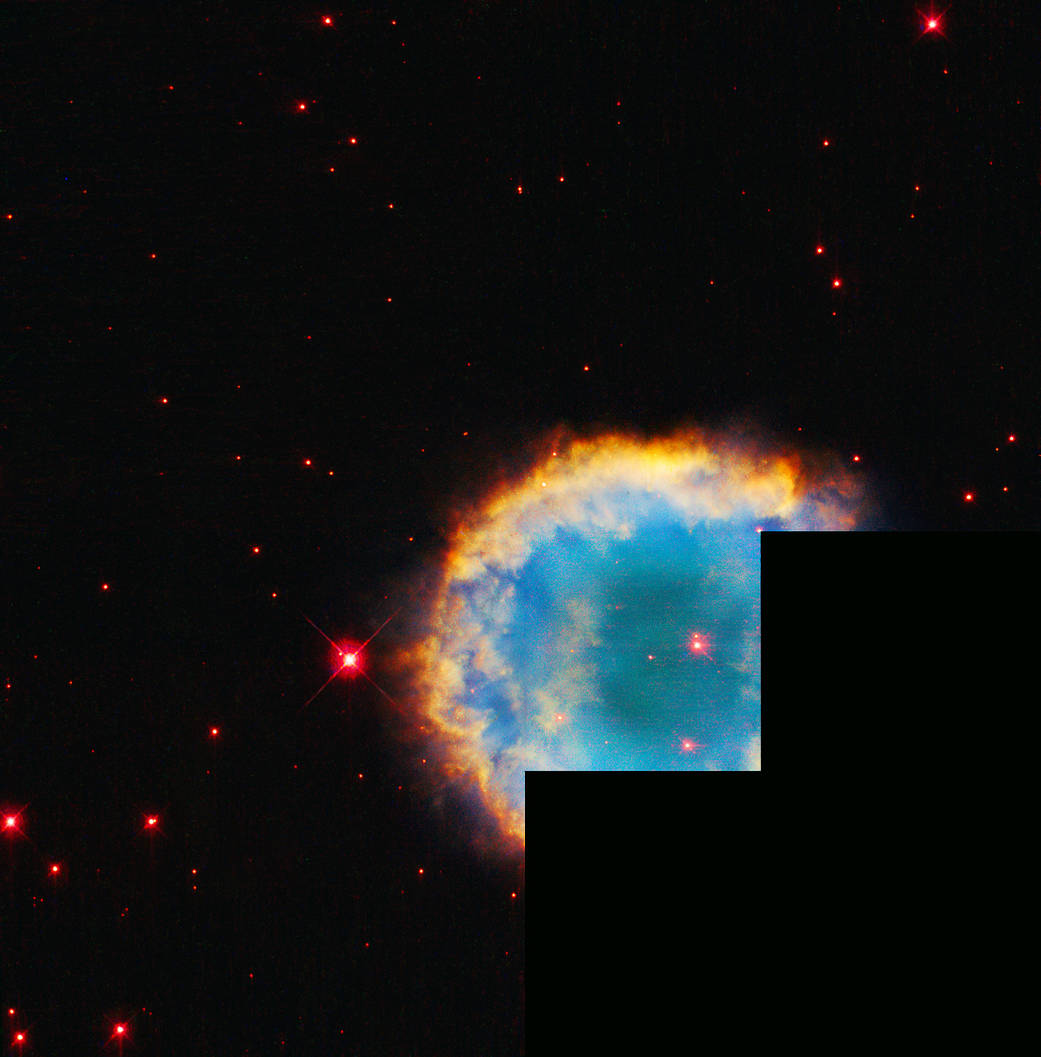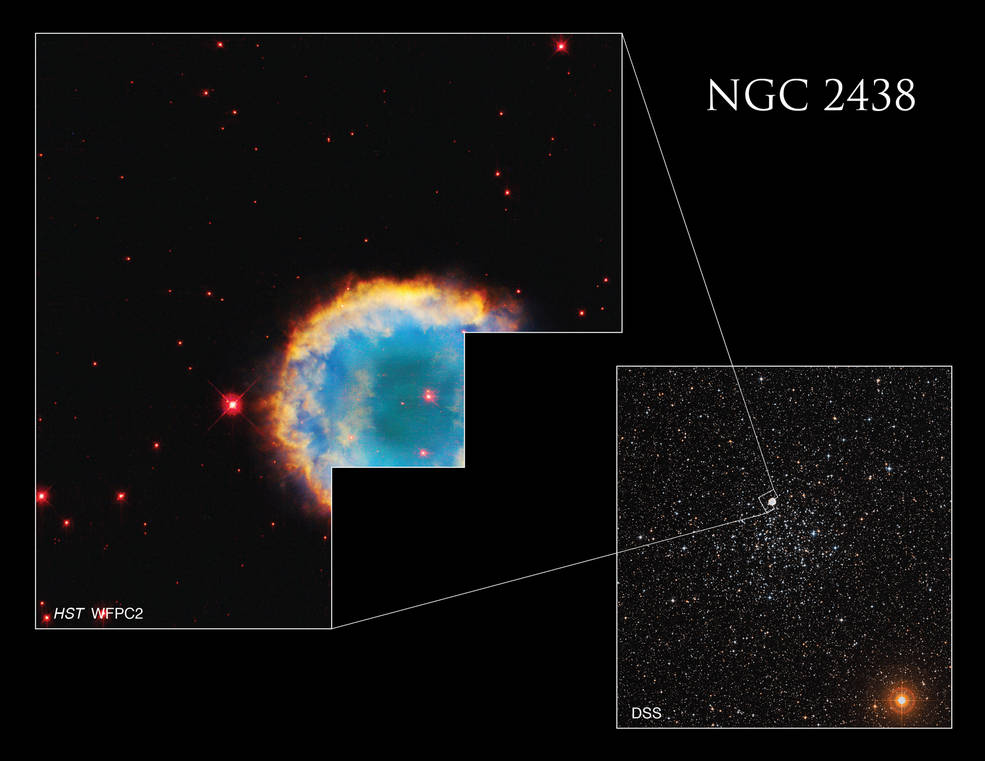哈勃拍摄到被朦胧光环环绕的彩色行星星云
NGC 2438 is a planetary nebula, formed after the death of a Sun-like star. The medium-sized star would have expelled its outer layers of gas into space as it died, leaving behind a white-dwarf core. A halo of glowing gas over 4.5 light-years across surrounds the nebula’s brighter inner ring. Many round or nearly round planetary nebulae display these halo structures, and astronomers have been investigating how they evolve. NGC 2438 was one of the nebulae studied, and researchers found that the nebula’s halo glows due to the ionizing radiation of the central white dwarf.
NGC 2438是一个行星状星云,是一颗类太阳的恒星死亡后形成。这颗中等大小的恒星在死亡时将外层气体喷射到太空中,留下一个白矮星内核。一个直径超过4.5光年的发光气体光环围绕着星云较亮的内环。许多圆形或接近圆形的行星状星云都显示出这种光环结构,天文学家一直在研究它们是如何演化的。NGC 2438是被研究的星云之一,研究人员发现这个星云的光环由于中央白矮星的电离辐射而发光。
In this color-filled image, blue represents oxygen (O III), green is hydrogen (H-alpha), orange is nitrogen (N II), and red is sulfur (S II).
在这张充满色彩的图片中,蓝色代表氧(O III),绿色代表氢(H-α),橙色代表氮(N II),红色代表硫(S II)。
This Hubble Space Telescope image was captured by Hubble’s Wide Field and Planetary Camera 2, which gave it its distinctive stair-shape. One of the camera’s four detectors provided a magnified view, which would be shrunk down in the final image to match the other three, creating the unique shape. For more information on the Wide Field and Planetary Camera 2 image shape, visit: https://www.nasa.gov/content/about-facts-hubble-faqs.
这张哈勃太空望远镜的图像是由哈勃的广角行星相机2号所拍摄,这赋予了它独特的阶梯形状。该相机的四个探测器中的一个提供了放大的视野,在最终图像中会缩小以匹配其他三个,从而形成独特的形状。更多关于广角行星相机2号图像形状的信息,请访问:https://www.nasa.gov/content/about-facts-hubble-faqs。
The colorful planetary nebula, NGC 2438, appears to lie on the outskirts of the open star cluster, M46 (NGC 2437). The nebula is actually in the foreground between us and the star cluster.
色彩斑斓的行星状星云,NGC 2438,似乎位于开放星团M46(NGC 2437)的外围。星云实际上位于我们和星团之间的前景中。
Credits: NASA, ESA, K. Knoll (NASA Goddard), S. Öttl (Leopold Franzens Universität Innsbruck), et. al., and DSS; Processing: Gladys Kober (NASA/Catholic University of America)
影像来源:NASA, ESA, K. Knoll (NASA Goddard), S. Öttl (Leopold Franzens Universität Innsbruck), et. al., and DSS; 影像处理:Gladys Kober (NASA/Catholic University of America)
Main Image Credit: NASA, ESA, K. Knoll (NASA Goddard), and S. Öttl (Leopold Franzens Universität Innsbruck), et. al.; Processing: Gladys Kober (NASA/Catholic University of America)
主图影像来源:NASA, ESA, K. Knoll (NASA Goddard), and S. Öttl (Leopold Franzens Universität Innsbruck), et. al.; 影像处理:Gladys Kober (NASA/Catholic University of America)


